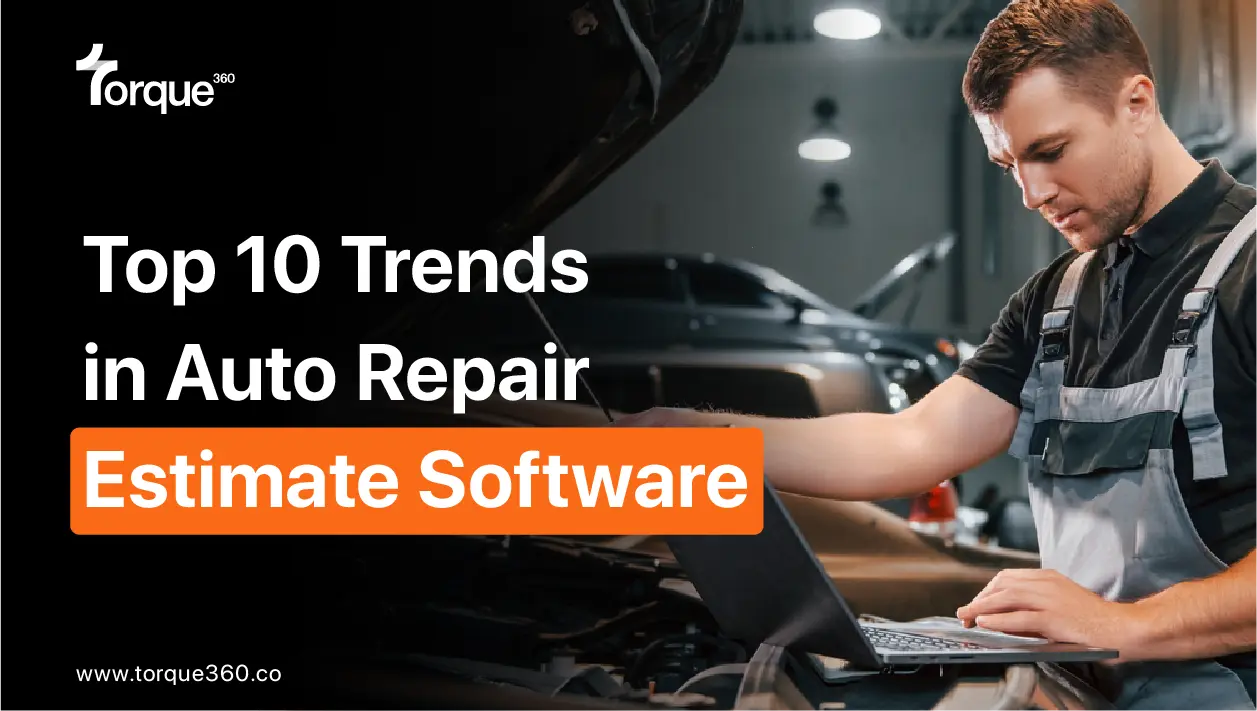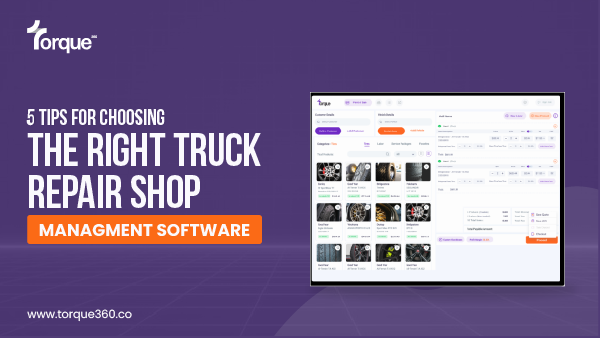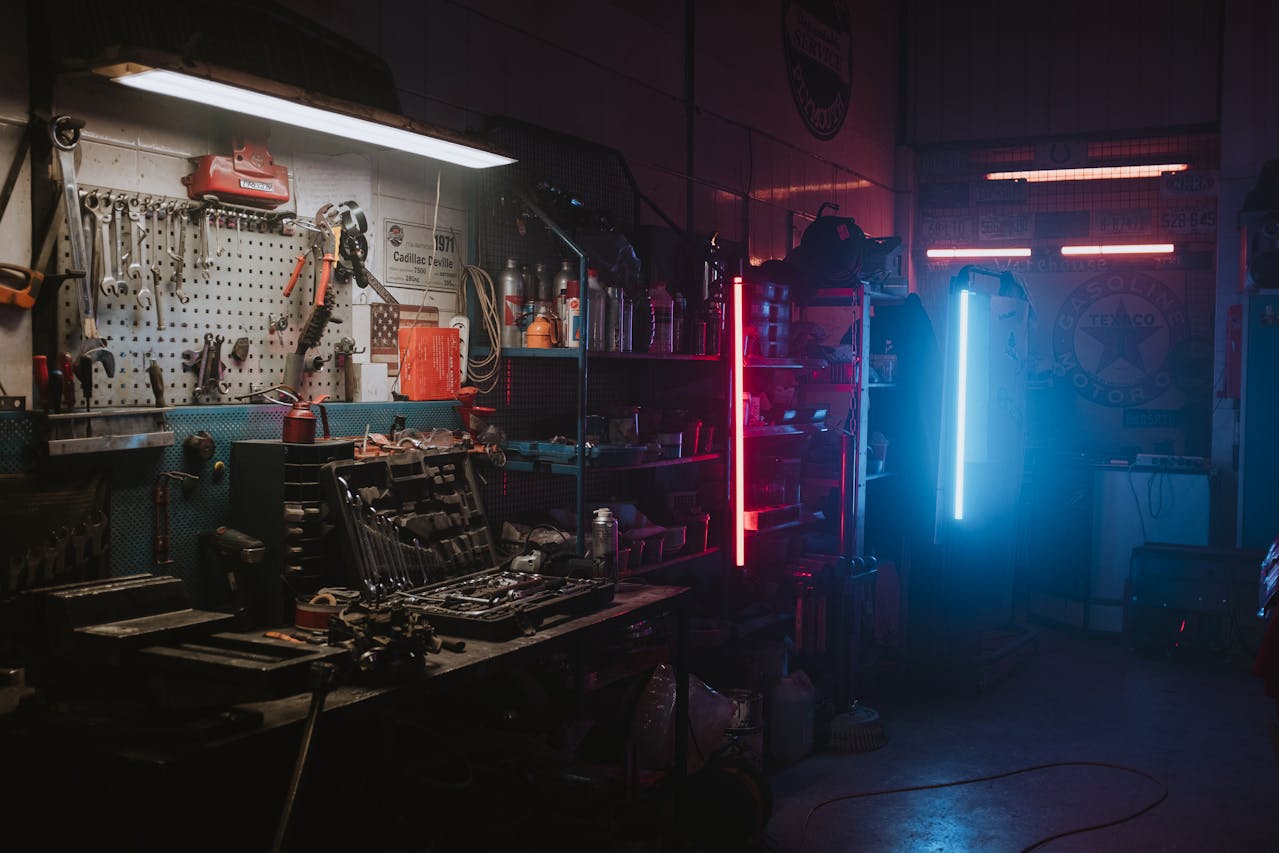Are you ready for the big changes coming to the auto repair industry?
This isn’t just a question—it’s a push for shop owners to stay ahead. The car industry is always changing, with new technology, different customer needs, and shifts in the global economy.
Auto repair shop owners must keep up with these changes to plan wisely and run a successful business.
Tools like auto repair estimate software can help shop owners stay organized and accurate when pricing repairs.
You’ll learn significant trends and gain insights from this detailed look at the auto industry.
Top 10 Trends in Auto Repair Estimate Software
Modern cars and advanced job trends are quickly changing the auto repair industry. Today’s cars have advanced computer systems, so mechanics use computers just as much as tools like wrenches. These advancements make cars last longer, with an average age of 11.8 years!
Finding skilled workers for car repair is getting harder. Many shop owners plan to retire in the next nine years, and the average age of a technician is 39. It’s tough to bring in new talent when technology and job expectations change quickly.
The smooth integration of cutting-edge technologies that improve operational effectiveness and consumer engagement defines this progress.
- Advanced Diagnostics and Telematics
The auto repair industry now uses modern diagnostic tools to make repair recommendations more accurate. These machines can identify the issues before they even occur. Auto repair estimate software can be plugged into modern machines to provide real-time estimates with predictive analysis for future repair needs.
- Repairs for Electric and Hybrid Vehicles
Auto repair shops must adapt to the rapidly changing auto repair market since hybrid and electric vehicles are becoming more popular. The repair practices for electric cars fundamentally differ from those for traditional automobiles. Auto repair estimate software should incorporate repair estimation algorithms for electric and hybrid vehicles. If you want to know more about electric vehicles, click here!
“China is the largest market for electric vehicles, making up more than half of global sales. The worldwide EV market is projected to expand at a strong annual growth rate of 22.6% from 2021 to 2028, with China playing a major role in this growth.”
- Predictive Maintenance
Estimate software can be coupled with diagnostic machines and leverage predictive algorithms to assess vehicle health. The software then notifies the customer to take action and avoid future failures. This predictive maintenance approach builds the reputation of auto repair shops and improves customer lifetime value.
Predictive maintenance uses innovative technology to spot potential problems before they happen. This approach, which involves learning from data, can save much money and hassle over time despite the upfront cost.
- Sustainability in Repairs
Repair shops are also becoming more eco-friendly. They’re starting to recycle more and use environmentally friendly products, which helps the planet and can be good for business.
- Ongoing Training for Technicians
It’s essential to keep up with the latest car technology. Technicians must continue their regular training via seminars, online courses, and certification programs to stay current with developments in the field.
- Self-Driving Cars: A New Era for Auto Repair
Self-driving cars are no longer just a concept from science fiction. Today, many vehicles come with some degree of autonomous features, and fully self-driving cars are fast approaching.
The autonomous vehicle (AV) industry is still in its early phases, with only 1,400 self-driving cars currently on U.S. roads. However, experts predict that number could soar to 33 million by 2040.”
Major car manufacturers like Tesla, Alphabet, Ford, GM, and Volvo are diving into the autonomous vehicle market.
Future-Proofing Your Auto Shop
Auto repair shops must stay up-to-date with this advancing technology, offering software updates, sensor repairs, and other tech-focused maintenance services. Training your team to understand and repair these advanced systems will be key to staying competitive in the future.
- The Rise of Connected Cars
Today’s cars have technology that links them to the internet, enabling features like real-time navigation updates, music streaming, and much more. This technology advances quickly, transforming cars into integral parts of a larger connected network.’
“The global connected car market is valued at approximately $103.24 billion, and experts predict it will grow to $191.83 billion by 2028.”
- Ride-sharing Popularity
Ride-sharing apps like Uber have changed how many people think about owning a car. In big cities, where parking is often hard to find, many people now use these services instead of having their car.
These apps have made getting around easier and more convenient, especially in places where having a car is only sometimes necessary.
- Use of Larger Vehicles
In the U.S., there’s a big trend toward bigger vehicles like SUVs and trucks. These vehicles are popular because they offer more space, comfort, and power and top the sales charts.
Several reasons have helped the rise in SUV sales.
- One reason is the rising cost of gas. As fuel prices increase, people are looking for vehicles with better mileage. While SUVs usually use more gas than smaller cars, they’re also roomier and more flexible.
- Another reason SUVs are becoming more popular is because more people are living active lifestyles. Many people now want vehicles that can handle outdoor activities like camping, hiking, and biking. SUVs are better for these adventures than regular cars.
Adapting Your Auto Repair Services for the SUV and Truck Boom
With the rise of SUVs and trucks on the road, adjusting your auto repair services is essential. Larger vehicles often require specialized maintenance, such as stronger brakes and more robust suspension work.
To stay ahead, using auto repair estimate software can help you efficiently assess and plan for the unique needs of these bigger cars, ensuring accurate estimates and better service for your customers.
- Fuel-Cell Electric Vehicles
Along with electric vehicles (EVs) that run on batteries, another type of car gaining attention is the fuel-cell electric vehicle (FCEV).
FCEVs work differently from regular electric cars. Instead of using batteries, they have a fuel-cell stack that combines hydrogen and oxygen to make electricity, and the only thing they release is water – no harmful CO2 emissions.
One big benefit of FCEVs is how fast and easy it is to refuel them. It’s like filling up a gas tank; it only takes about five minutes.
In addition, they can travel around 300-400 miles on a single tank, just like many gas-powered cars.
Preparing Auto Shops for the Rise of Fuel-Cell Electric Vehicles
As fuel-cell electric vehicles (FCEVs) become more popular, auto repair shops might need special training and equipment to care for these cars. FCEVs are different from regular vehicles, so shops may need to learn new skills for repairs and maintenance.
Also, more FCEVs on the road could change the types of services and parts that auto repair shops offer.
“To make your work more efficient, it would be best to use digital tools. You can take your auto repair business to the next level with good auto repair management software. Torque 360 offers all-round automotive management software as well. It includes many features such as scheduling, invoicing, estimating, digital vehicle inspection, repair order management, a technician portal, POS integration, and marketing solutions.”
Wrapping Up!
The auto repair industry is pivotal, offering shop owners a unique chance to shape their future. To survive and thrive in the years ahead, it’s essential to recognize external challenges, adapt to internal shifts, and strategically seize new opportunities.




